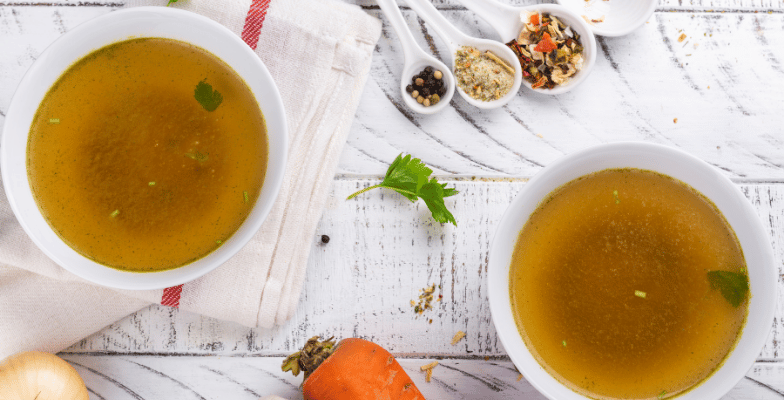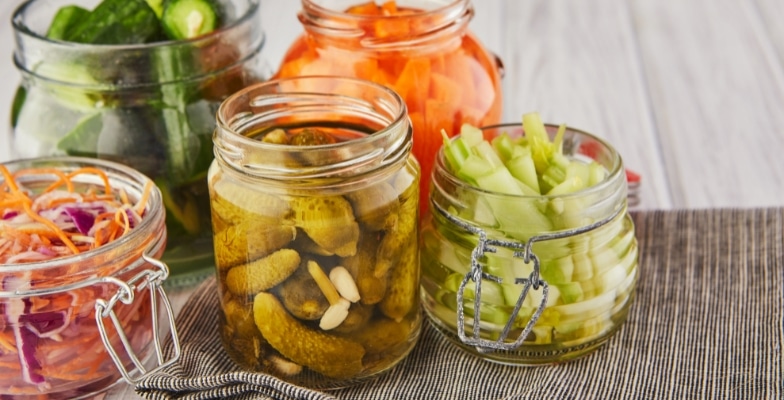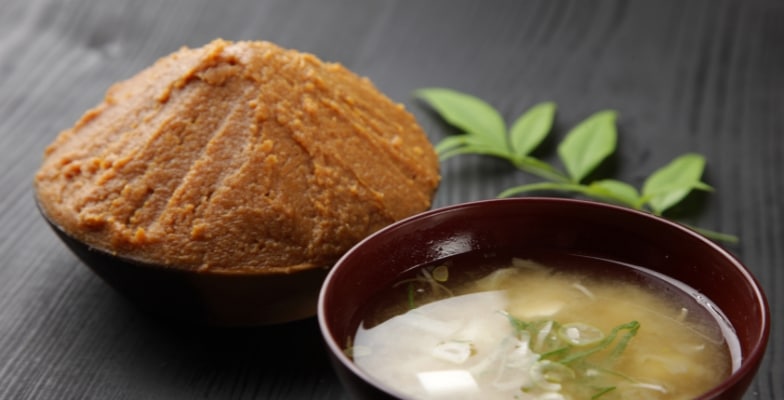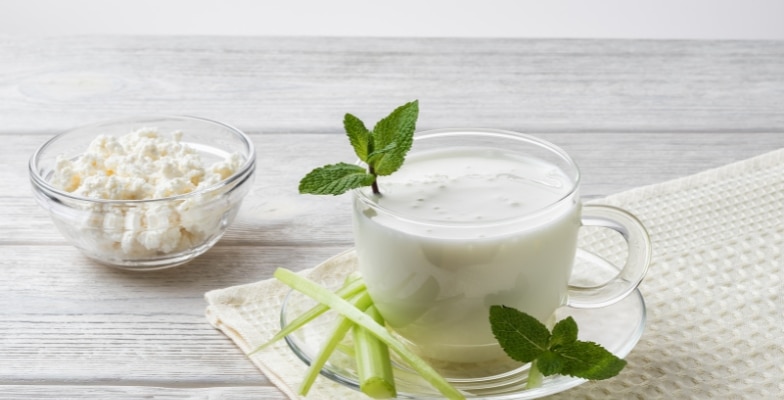What Is Bone Broth And What Are Its Benefits?
- Introduction
- What Is Bone Broth?
- Bone Broth Nutrition Facts
- Benefits Of Bone Broth
- How To Make Bone Broth
- Precautions
- My Recommendation

Introduction
Bone broth isn’t just broth. And it isn’t just soup. It’s concentrated healing.
~ Kellyann Petrucci
My father loved serving us a big bowl of bone broth in Delhi winters. I used to wonder why and hated it when he gave it to us. It was almost like medicine at that point.
But shorba (that’s what he called it in Hindi) was to make us strong and build our immunity against the cold winters, he told me years later. Little did I know at that age the logic and nutrition behind it.
Many vegetarians might not know the benefits of bone broth; let me widen your horizons with the information in this article about bone broth.
What Is Bone Broth?
Meat water and stock are two other terms for bone broth, but in the culinary world, bone broth is not stock but the flavorful juices obtained from simmering bones, tendons, cartilage, skin, and vegetables with herbs and spices for a few hours to overnight.
Stock is made by simmering bones and leftover meats with a mirepoix (onion, carrot, and celery) in water, usually unseasoned, and is cooked for a shorter duration than broth.
The long cooking process for bone broth allows nutrients like proteins from collagen, tissues, and gelatin to ooze into the water, creating a flavorful, nutritious, thick broth rich in protein. There has been a curiosity for differences between animal protein and plant protein.
Related Article: 7 Functions Of Protein In The Body
Bone broth has been a part of traditional diets in many communities globally for thousands of years. It has recently gained popularity and recognition as a flavorful, nutritious broth base for many dishes and dietary supplements.
Bone broth is generally made using bones from pork, beef, veal, turkey, lamb, venison, chicken, or fish. Leftover bones, marrow, and connective tissues like feet, hooves, beaks, gizzards, or fins can also create a broth.
Bone Broth Nutrition Facts
The nutritional content of bone broth varies based on the quality of meat, bones, ingredients, and cooking time. The USDA Nutrient Database states that 1 cup of homemade chicken or beef stock has 31-86 calories, 0.2-2.9 g fat, 4.7-6 g protein, and a varying amount of calcium, iron, potassium, and other minerals. 1https://nutritiondata.self.com/facts/recipe/2768812/2
Animal bones are rich in many trace minerals, including calcium, magnesium, potassium, and phosphorus. Bone marrow is generally rich in nutrients like iron, vitamins A and K, fatty acids, selenium, zinc, manganese, and omega-3 and omega-6 fatty acids.
Fishbones contain iodine, which is essential for healthy thyroid function and metabolism. Connective tissue provides glucosamine and chondroitin, natural compounds found in cartilage known to support bone and joint health.
The bones of animals and fish also contain the protein collagen, which turns into gelatin when cooked and yields several essential amino acids. 2https://www.sciencedirect.com/topics/agricultural-and-biological-sciences/collagen
Benefits Of Bone Broth
Bone Broth & Gut Health
Researchers and scientists have begun to identify a correlation between gut health and rising cases of some chronic health conditions. These discoveries have laid the groundwork for balancing gut health and developing therapeutic strategies that might modify gut microbiota.
Diet may contribute to the health of the intestinal tract. 3https://www.ncbi.nlm.nih.gov/pmc/articles/PMC3983973/ Two diets that emphasize bone broth for better gut health are the GAPS diet and the paleo diet.
Dr. Natasha Campbell-McBride designed the GAPS (Gut and Psychology Syndrome) diet. She focuses on improving gut health, which in turn, she says, will improve symptoms of many diseases, including ADHD, dyslexia, schizophrenia, and autism.
In her diet plan, it is recommended to consume a cup of bone broth or meat stock with every meal. Many patients have difficulty digesting fats at the initial phase of the diet but might tolerate a few tablespoons of bone broth while the body is healing. 4http://www.gapsdiet.com/gaps-full-diet.html
People living in the Paleolithic period, or ‘cave people,’ ate whatever their surroundings afforded them. In its purest form, the paleo diet allows you to eat only foods that humans ate when they first roamed the planet millions of years ago.
The diet emphasizes eating fresh fruits, vegetables, meat, and nuts and skipping dairy, grains, and legumes. Bone broth is a legitimate fit for this diet.
Bone broth is also a realistic option to drink in intermittent fasting diets and fits well with macronutrient requirements in the keto diet. The benefits of bone broth are so popular that an entire diet, ‘The Bone Broth Diet,’ has been created around it.
Bone broths contain gelatin, which is said to be a digestive aid and may bind to water in the digestive tract, helping foods move through the gut more quickly.
Glutamine, an amino acid in gelatin, may help maintain the intestinal wall’s function, preventing and healing a health condition called “leaky gut.” Leaky gut-a weakened stomach and bloodstream barrier are associated with many chronic diseases.
Drinking bone broth may be a simple way to get anti-inflammatory amino acids, benefiting patients with leaky gut and irritable bowel diseases (IBD), such as ulcerative colitis or Crohn’s disease. 5https://pubmed.ncbi.nlm.nih.gov/27749689/, 6https://www.ncbi.nlm.nih.gov/pmc/articles/PMC5622680/
Bone Broth & Bone Health
Collagen is a significant component of bones, muscles, cartilage, ligaments, tendons, skin, and even blood vessels. A study linked consuming collagen from chickens with reduced knee joint symptoms like pain, stiffness, and physical function in people with osteoarthritis. 7https://nutritionj.biomedcentral.com/articles/10.1186/s12937-016-0130-8, 8https://pubmed.ncbi.nlm.nih.gov/24852756/
Connective tissue provides glucosamine and chondroitin, natural compounds in cartilage that may decrease joint pain and reduce osteoarthritis symptoms. 9https://pubmed.ncbi.nlm.nih.gov/15846645/, 10https://pubmed.ncbi.nlm.nih.gov/25589511/, 11https://pubmed.ncbi.nlm.nih.gov/12860572/
Bone Broth May Be Anti-Inflammatory
Chicken soup has been a remedy for symptomatic upper respiratory tract infections for many years across cultures. Laboratory tests suggest that chicken soup inhibits neutrophils’ activity, white blood cells that are the “first responders” to inflammation. 12https://www.unmc.edu/strategic-communications/media/press-kits/chicken-soup/chickensouppublishedstudy2000.pdf
The long cooking time for bone broth may break down cartilage and tendons, releasing anti-inflammatory compounds. The amino acids available in bone broth, including glycine and arginine, may have potent anti-inflammatory effects. 13https://pubmed.ncbi.nlm.nih.gov/12589194/, 14https://pubmed.ncbi.nlm.nih.gov/21996294/, 15https://www.ncbi.nlm.nih.gov/pmc/articles/PMC4899898/
There are more health benefits to drinking bone broth, but more scientific evidence is essential to support many of these claims.
How To Make Bone Broth
Making bone broth at home is very easy. A simple way to make it is to save bones from other meals or buy meat and bones from the butcher and roast them in a large pot or Dutch oven with a little desi ghee or olive oil.
Then add any vegetables you like, but generally, onion, carrots, celery, tomatoes, and fresh herbs go well. Once roasted, top it up with filtered water until generously covered(about 10- 12 cups).
Next, add salt and spices to taste. Then add 1- 2 Tbsp(15- 30 ml) of apple cider vinegar or lemon juice. The acidity breaks down the collagen and makes it more available in the broth.
Bring to a boil, then let the broth simmer for at least 10-12 hours or until reduced by 1/3 or 1/2 to yield about 5-7 cups of thick bone broth. The longer it simmers and reduces, the more intense the flavor becomes, and the more collagen is extracted.
Some people also prefer soaking the meat or bones in vinegar for a couple of hours before extracting more nutrients upfront. One can drink the bone broth by itself or use it as a base for sauces, soups, gravies, and more.
Precautions
There are toxicological issues and health risks associated with ingesting toxic metals such as lead that can accompany bone minerals. Lead concentrations may be lower in animals raised in optimal environments.
My Recommendation
The best and most remarkable benefit of traditional cooking is that the young generation returns to their kitchens to prepare homemade healthy meals from scratch.
Bone broths with additional vegetables can be comforting, warming, and nourishing. A low-fat, low-sodium, vegetable-rich bone broth can be a part of a healthy meal.
I recommend making bone broth at home from organic, pasture-raised animals or wild-caught fish, which will minimize toxins and maximize nutrients and minerals.
What do you think of this article? Have any questions? Let me know in the comments below!

Skill-Based Education.
Global Recognition.
Powerful Community Building
Secure a certificate of completion in as little as a day by graduating from one of our free courses.
Get Access to Our Free Courses. No Credit Card Required.

Fabulous Body Membership
Your All-Access Pass to A Fabulous Body & A Rewarding Career
25+ Certificate Courses & Programs, All Included
15 Day Free Trial, 100% Money-Back Guarantee
About Kamini Thakar
Kamini is a very skilled writer/content creator. As a part of Fabulous Body for years, she has authored many articles really proving her prowess in acquiring and presenting knowledge about various health & nutrition topics.











Thank you so much very educative. I used to undermine bone broth growing up. I’m greatful to my parents for making us 7 of us consume it
Hi,
We are glad to know that you liked this content. Yes, it is an underrated food with loads of benefits. I hope that you will continue to consume it now.
Regards,
Kunal,
Team Fabulous Body